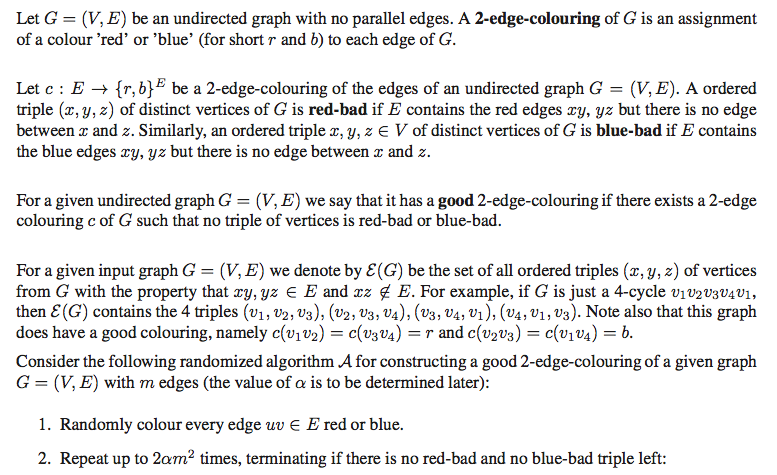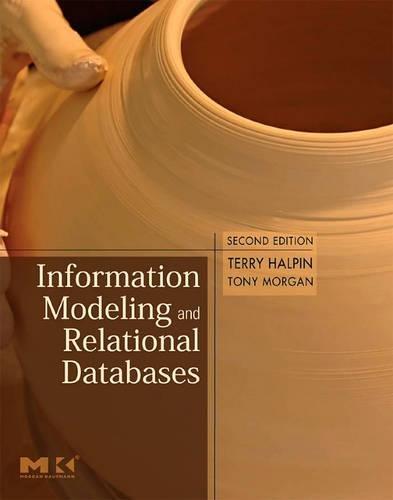


Let G = (V, E) be an undirected graph with no parallel edges. A 2-edge-colouring of G is an assignment of a colour 'red' or 'blue' (for short r and b) to each edge of G. Let c : E {r, E be a 2-edge-colouring of the edges of an undirected graph G-(KE). A ordered triple (x, y,z) of distinct vertices of G is red-bad if E contains the red edges xy, yz but there is no edge between z and z. Similarly, an ordered triple x, y, z E V of distinct vertices of G is blue-bad if E contains the blue edges xy, yz but there is no edge between x and z. For a given undirected graph G = (V E) we say that it has a good 2-edge-coloring if there exists a 2-edge colouring c of G such that no triple of vertices is red-bad or blue-bad. For a given input graph G-(V, E) we denote by E(G) be the set of all ordered triples (x,y, z) of vertices from G with the property that xy, yz E , and zz E. For example, if G is just a 4-cycle ViU2U3van, then E(G) contains the 4 triples (U1 , vs), (v2, v3, v.), (v3M4 v), (v4Mrv). Note also that this graph does have a good colouring, namely c(vv2)-c(vzv4) -r and c(v2U3)- c(vivA)b. Consider the following randomized algorithm A for constructing a good 2-edge-colouring of a given graph G- (V,E) with m edges (the value of a is to be determined later): 1. Randomly colour every edge uv E red or blue. 2. Repeat up to 2am2 times, terminating if there is no red-bad and no blue-bad triple left: Let G = (V, E) be an undirected graph with no parallel edges. A 2-edge-colouring of G is an assignment of a colour 'red' or 'blue' (for short r and b) to each edge of G. Let c : E {r, E be a 2-edge-colouring of the edges of an undirected graph G-(KE). A ordered triple (x, y,z) of distinct vertices of G is red-bad if E contains the red edges xy, yz but there is no edge between z and z. Similarly, an ordered triple x, y, z E V of distinct vertices of G is blue-bad if E contains the blue edges xy, yz but there is no edge between x and z. For a given undirected graph G = (V E) we say that it has a good 2-edge-coloring if there exists a 2-edge colouring c of G such that no triple of vertices is red-bad or blue-bad. For a given input graph G-(V, E) we denote by E(G) be the set of all ordered triples (x,y, z) of vertices from G with the property that xy, yz E , and zz E. For example, if G is just a 4-cycle ViU2U3van, then E(G) contains the 4 triples (U1 , vs), (v2, v3, v.), (v3M4 v), (v4Mrv). Note also that this graph does have a good colouring, namely c(vv2)-c(vzv4) -r and c(v2U3)- c(vivA)b. Consider the following randomized algorithm A for constructing a good 2-edge-colouring of a given graph G- (V,E) with m edges (the value of a is to be determined later): 1. Randomly colour every edge uv E red or blue. 2. Repeat up to 2am2 times, terminating if there is no red-bad and no blue-bad triple left









